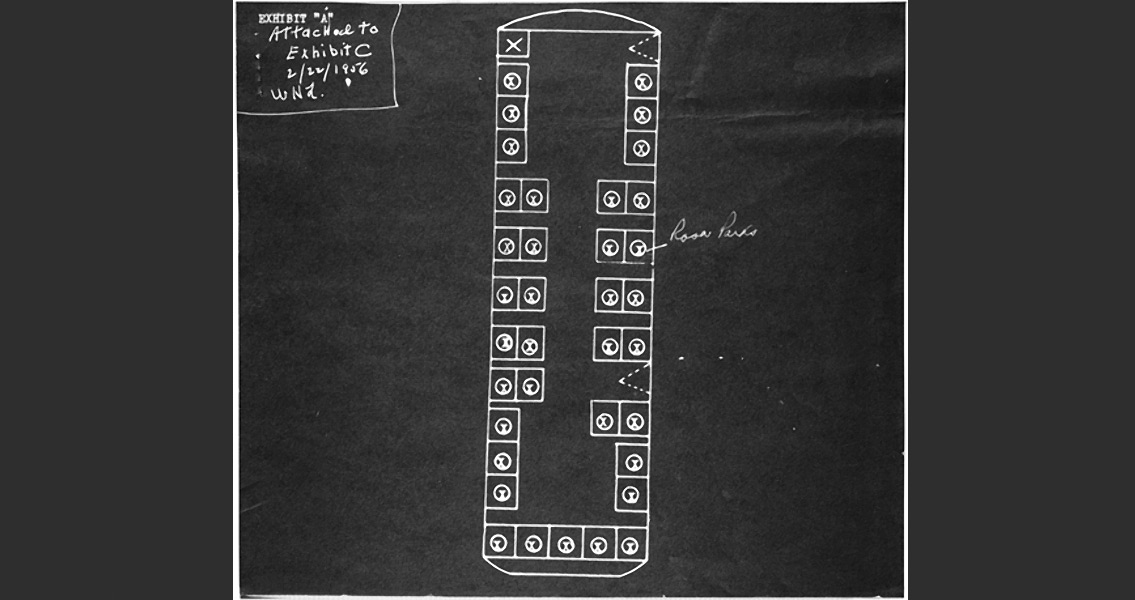<![CDATA[Following a long day's work at a Montgomery, Alabama department store, black seamstress Rosa Parks boarded the Cleveland Avenue bus on the 1st December 1955, and headed home. Parks took a seat in the section of the bus designated for 'coloured' people. As the bus moved along its route, it began to fill up with passengers. Before reaching its destination, the driver noticed that several white passengers were standing in the aisle of the now full bus. He pulled over, and moved the sign segregating the 'black' and 'white' sections of the bus back, to give more seats to the white passengers. What happened next is widely considered to have kick started the Montgomery Bus Boycott, and pushed the USA's Civil Rights movement into a nationwide concern. The driver asked several black passengers to give up their seats and move further back into the bus. Most complied, but 42 year old Parks refused to move. She later recalled that she wasn't physically tired, but tired of "giving in". City regulations allowed bus drivers to assign seats to passengers, but didn't explicitly give them the authority to force a passenger give up their seat. Nevertheless, a custom had developed among the city's bus drivers where they would demand black passengers give their seats to white. If the passenger refused, the police could be called to remove the passenger from the bus. That's exactly what happened to Rosa Parks, who was arrested at the scene and charged under Chapter 6, Section 11, of the Montgomery City Code. Parks was taken to the police headquarters, before being released on bail that evening. Parks had been exposed to the injustices of racial discrimination and the campaign for equality from a young age. Her grandparents, Rose and Sylvester Edwards, were both former slaves, and strong campaigners for civil rights. In her youth Parks had witnessed her grandfather stand outside the family home to defend it with with a loaded shot gun, as Ku Klux Klan members marched down their street. At the age of 19 she married Raymond Parks, an active member of the National Association for the Advancement of Colored People (NAACP). After receiving her high school degree, Parks became an active civil rights campaigner, joining the Montgomery chapter of NAACP and working as its youth leader. These connections to NAACP and her lifetime of involvement in the civil rights movement undoubtedly played a key role in triggering the reaction to her arrest. E.D. Nixon, the president of NAACP's Montgomery branch, met her as she was released on bail. It was quickly agreed between Parks, her husband and NAACP that her case would be the perfect example to use in the campaign against Alabama's segregation laws. It was decided that on the day of Parks' trial, the 5th December, Montgomery's black population would boycott the city's bus system in protest. Parks was given a suspended sentence, fined $10 and ordered to pay $4 in court costs. Participation in the Montgomery Bus Boycott meanwhile, was much greater than anyone had hoped, and Nixon and several local black ministers decided to try and capitalise on the momentum. As appeals against Montgomery's segregationist legislation entered the courts, the city turned into a hotbed or racial conflict, the city's white population reacting against the Bus Boycott campaign and its aftermath. The homes of Nixon, and the recently elected president of the Montgomery Improvement Association, Dr. Martin Luther King, were bombed as international and national media came to focus on the city. On 13th November 1956, the Supreme Court ruled that bus segregation was illegal, and the Montgomery Bus Boycott came to a triumphant end. For Parks, later deemed the 'Mother of the Civil Rights Movement', the campaign had been costly. She had lost her job and experienced continued harassment throughout the boycott. She and her husband eventually moved to Detroit, to escape the continued abuse.]]>
Rosa Parks Arrested
